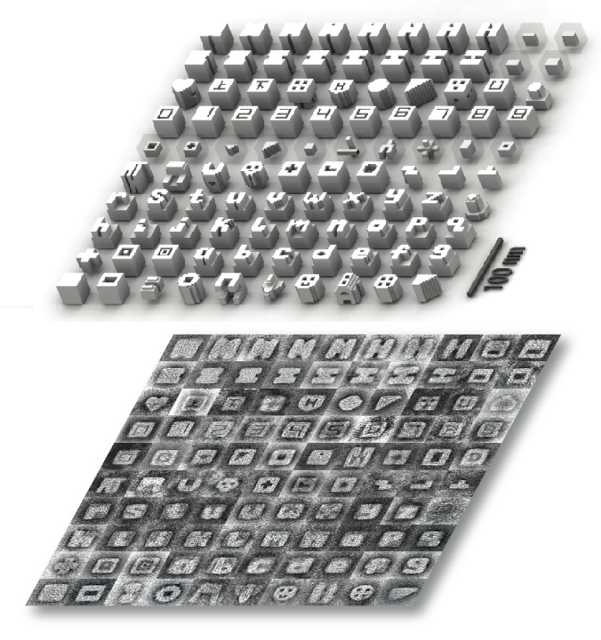

| Visitors Now: | |
| Total Visits: | |
| Total Stories: |

| Story Views | |
| Now: | |
| Last Hour: | |
| Last 24 Hours: | |
| Total: | |
Researchers Create Versatile 3D Nanostructures Using DNA “Bricks”
From
Researchers at the Wyss Institute for Biologically Inspired Engineering at Harvard University have created more than 100 three-dimensional (3D) nanostructures using DNA building blocks that function like Lego® bricks — a major advance from the two-dimensional (2D) structures the same team built a few months ago.
In effect, the advance means researchers just went from being able to build a flat wall of Legos®, to building a house. The new method, featured as a cover research article in the 30 November issue of Science, is the next step toward using DNA nanotechnologies for more sophisticated applications than ever possible before, such as “smart” medical devices that target drugs selectively to disease sites, programmable imaging probes, templates for precisely arranging inorganic materials in the manufacturing of next generation computer circuits, and more.
The nanofabrication technique, called “DNA-brick self-assembly,” uses short, synthetic strands of DNA that work like interlocking Lego® bricks. It capitalizes on the ability to program DNA to form into predesigned shapes thanks to the underlying “recipe” of DNA base pairs: A (adenosine) only binds to T (thymine) and C (cytosine) only binds to G (guanine).
Computer-generated 3D models (left) and corresponding 2D projection microscopy images (right) of nanostructures self-assembled from synthetic DNA strands called DNA bricks. A master DNA brick collection defines a 25-nanometer cubic “molecular canvas” with 1000 voxels. By selecting subsets of bricks from this canvas, Ke et al. constructed a panel of 102 distinct shapes exhibiting sophisticated surface features as well as intricate interior cavities and tunnels. These nanostructures may enable diverse applications ranging from medicine to nanobiotechnology and electronics. [Image Credit: Yonggang Ke, Wyss Institute, Harvard University.]
See more and subscribe to NextBigFuture at 2012-11-30 10:42:12 Source: http://nextbigfuture.com/2012/11/researchers-create-versatile-3d.html
Source:



